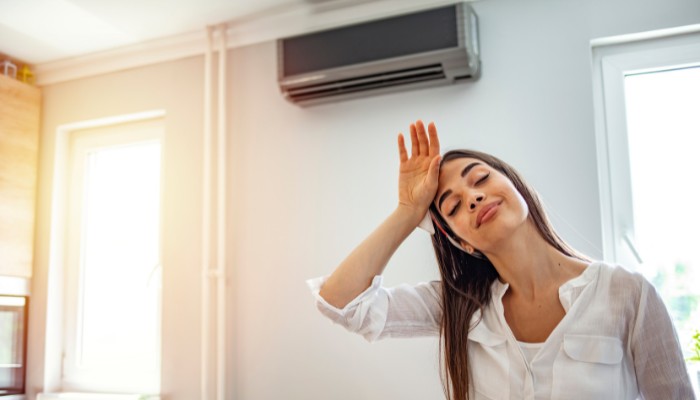The LIHEAP Crisis Cooling Program was officially released this week, and every household that has received a grant from the Low Income Home Energy Assistance Program (LIHEAP) is eligible to be covered by this new subsidy.
All those individuals or families who have received a cash or service payment grant during the last 12 months can apply, and will receive an aid in home cooling services. Any beneficiary who has received LIHEAP aid between November 1, 2022 and May 13, 2023 is eligible. Keep reading if you’re entitled to apply for these resources.
The LIHEAP Crisis Cooling Program in every state
All households that want to apply for this LIHEAP emergency grant must have an official award letter indicating that they have received LIHEAP funds in the aforementioned period (the current fiscal year). If the customer or household received heating services for the LIHEAP season through ECA, he will automatically become a Crisis Cooling Customer if he is interested in the service.

Every US state has different subsidies you could request, depending on the local climate and weather. For example, in Alabama, there is heating aid from October 10 through May 31, and cooling aid from June 6 through September 30. But, in Alaska, it’s different: the state don’t run a cooling program, since it’s not usual to have heatwaves there.
Another is the case in Arizona, where the state give different subsidies depending on the county. So, cooling is LIHEAP-supported from April 1 to October 31 in: Coconino, Yavapai, Navajo, Apache, Greenlee, Graham, Cochise, and Santa Cruz. Meantwhile, the heating is subsidized from December 1 to March 31 in: Mojave, La Paz, Yuma, Maricopa, Gila, Pinal, and Pima . The heating and cooling months overlap due to weather conditions, and might be different every year.
The official LIHEAP website offers a list of every US state, with the specific caracteristics of the assistance conferred in each one. You can find your state in this list.
How to quality for the LIHEAP Crisis Cooling Program
Extreme heat can pose serious health risks, particularly for vulnerable populations such as the elderly, disabled individuals, and families with young children. The Crisis Cooling Program aims to mitigate these risks by providing financial assistance to help cover cooling-related expenses. To qualify for the LIHEAP Crisis Cooling Program, certain criteria must be met.
The eligibility requirements generally consider factors such as income, household size, and the presence of vulnerable individuals. Income limits are set based on the federal poverty guidelines, ensuring that the program serves those with the greatest need. Additionally, priority may be given to households with elderly or disabled members.
The application typically requires information about household income, size, and other relevant details. First, you must meet the income cap requirements (household size and income limit):
- 1 person: $20,385
- 2 people: $27,465
- 3 people: $34,545
- 4 people: $41,625
- 5 people: $48,705
- 6 people: $55,785
- 7 people: $62,865
- 8 people: $69,945
- 9 people: $77,025
- 10 people: $84,105
- For every additional person, add $7,080
You can request one of the next emergency subsidies:
- Broken heating equipment or leaking lines that must be fixed or replaced
- Lack of fuel
- The main heating source or second heating source (a source that is used to operate the main heating source or used if the main heating source is not working, or even has been completely shut-off
- The danger of being without fuel: when the household has less than a 15-day supply
- The danger of having utility service terminated: when you’ve received a notice that service will be shut off within the next 60 days
Take a look at the official LIHEAP site, in order to determine whether your household qualifies or not. If you live in an area being struck by extreme heat, check here.
Surviving the scorch: Essential pips for beating the extreme heat
When the mercury skyrockets, hydration becomes your closest ally. Drink plenty of water, even if you don’t feel thirsty, as it helps replenish the fluids your body loses through sweat. Avoid alcohol, caffeinated beverages, and sugary drinks, as they can dehydrate you further. Carry a water bottle wherever you go, and encourage those around you to stay hydrated as well.
When the sun is blazing, find refuge in shaded areas and air-conditioned spaces. If you don’t have access to air conditioning at home, visit public buildings like libraries, shopping malls, or community centers that offer a cool respite. If going outside is unavoidable, wear lightweight and light-colored clothing to reflect sunlight and choose wide-brimmed hats to shield your face from direct exposure.
Adjust your daily routine to minimize heat exposure. Plan outdoor activities for the cooler parts of the day, typically early mornings or evenings. Avoid strenuous physical activities during peak heat hours, as they can increase the risk of heat-related illnesses. If you must be outside, take frequent breaks, find shade, and listen to your body’s cues for rest.